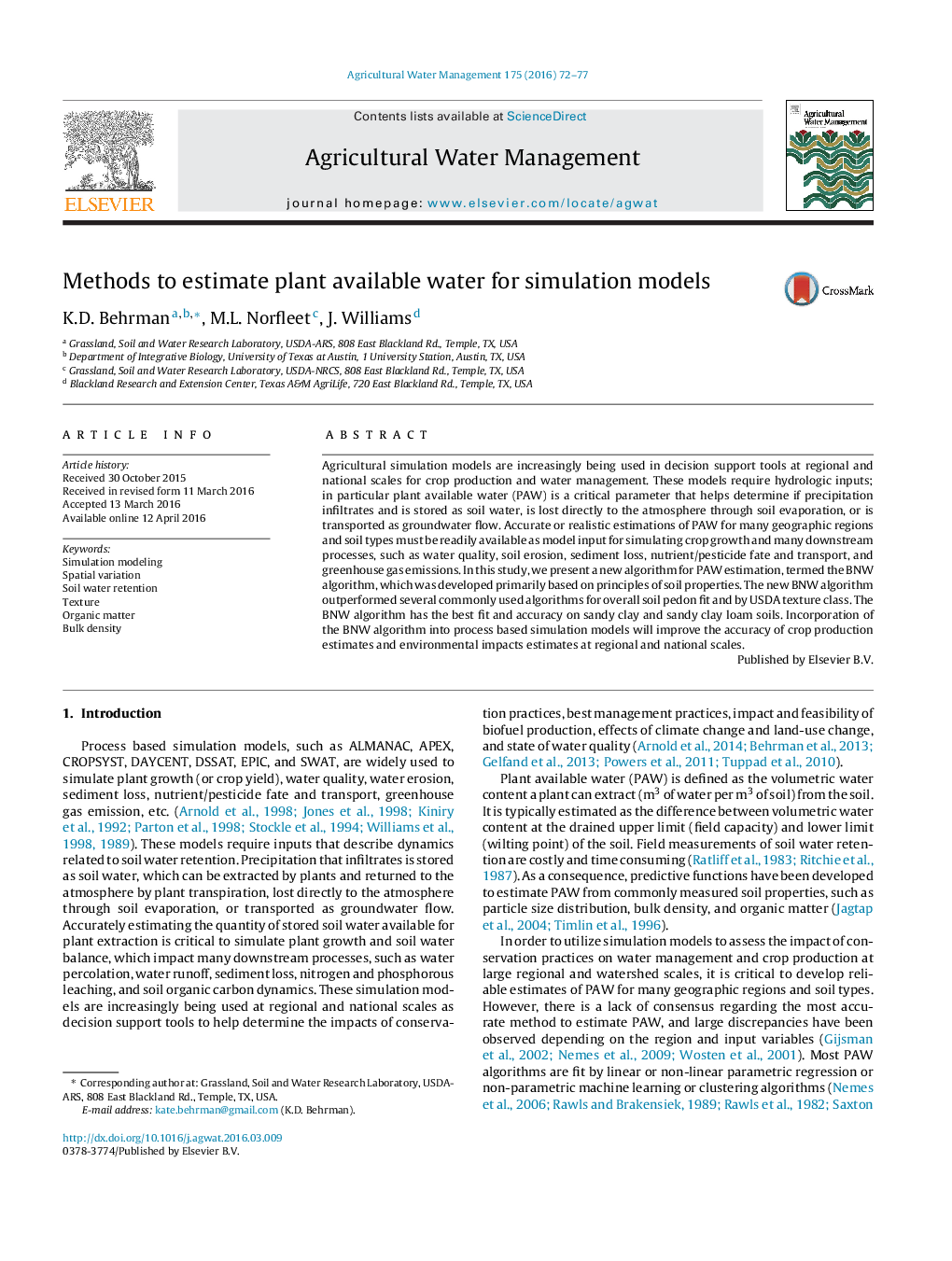| کد مقاله | کد نشریه | سال انتشار | مقاله انگلیسی | نسخه تمام متن |
|---|---|---|---|---|
| 4478267 | 1622905 | 2016 | 6 صفحه PDF | دانلود رایگان |
• Crop simulation models are being used in decision support tools.
• These models require accurate estimates of plant available water (PAW) for a wide range of soils.
• We present a new method to estimate PAW based on principles of soil properties.
• The new algorithm outperformed four commonly used PAW algorithms.
• Accurate PAW estimates will improve simulations of crop production and environmental impacts estimates at regional and national scales.
Agricultural simulation models are increasingly being used in decision support tools at regional and national scales for crop production and water management. These models require hydrologic inputs; in particular plant available water (PAW) is a critical parameter that helps determine if precipitation infiltrates and is stored as soil water, is lost directly to the atmosphere through soil evaporation, or is transported as groundwater flow. Accurate or realistic estimations of PAW for many geographic regions and soil types must be readily available as model input for simulating crop growth and many downstream processes, such as water quality, soil erosion, sediment loss, nutrient/pesticide fate and transport, and greenhouse gas emissions. In this study, we present a new algorithm for PAW estimation, termed the BNW algorithm, which was developed primarily based on principles of soil properties. The new BNW algorithm outperformed several commonly used algorithms for overall soil pedon fit and by USDA texture class. The BNW algorithm has the best fit and accuracy on sandy clay and sandy clay loam soils. Incorporation of the BNW algorithm into process based simulation models will improve the accuracy of crop production estimates and environmental impacts estimates at regional and national scales.
Journal: Agricultural Water Management - Volume 175, September 2016, Pages 72–77
